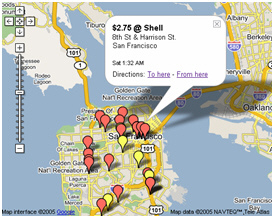What CEOs should know about the 'recombinant Web'

BusinessWeek recently published a list of 10 newer technologies to which CEOs (and CIOs, etc.) should pay attention, depending on their industry. The list included personal assistants, next-generation collaboration, podcasting, seamless wireless, TiVoToGo, mesh networks, RFID, business activity monitoring, real-time identity theft notification and prediction markets. It's an eclectic list, and the article has some good examples of why those 10 technologies are going to matter in the coming years. A story on ZDNet today by Martin LaMonica connected me back to that BW story, compelling me to add another technology to the list: the recombinant Web. Martin refers to what I'm calling the recombinant Web (I'm probably not the first to utter the phrase) as Web mash-ups in his story. It's not exactly the same as the music-related definition of mashing together a few pre-existing songs into something new, but it has the same flavor. Sometimes referred to as Web 2.0 (and there is debate in the blog echochamber about that name), the recombinant Web, Web mash-ups, Web 2.0 or just the next phase of Web evolution heralds the use of the Web as a platform for creating new kinds of user experiences and businesses. Jon Udell calls it remixable Web applications. Martin gives the example of Cheap Gas, which mashes GoogleMaps and GasBuddy together to locate gas stations with the lowest prices.
Cheap Gas

Traffic search is another example of combining the capabilities of Web services from different vendors. Amazon, Google, eBay Yahoo and others have opened up their APIs so that developers, and even consumers, can tap into their services. For any business that has a Web presence, figuring out the potential of the recombinant, remixed, mashed-up Web should be a priority. It can be as simple as providing package tracking within a site or tying maps to different data sets, and as complex as creating a federation of Web services that are recombined in unique ways, customizing the experience for each user.